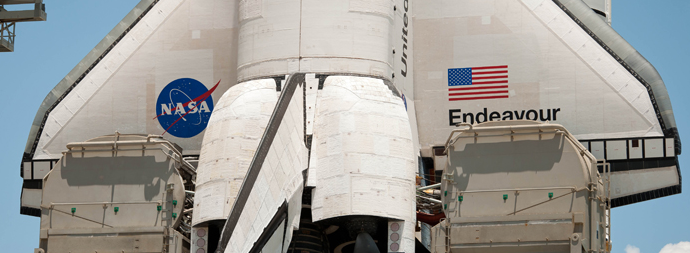Here are the answers to your uncertainties exercise. Please compare these to your own solutions and ask me about anything you don’t follow.
AH Physics
AH uncertainties homework
Here is an electronic copy of the uncertainty questions you should attempt before Monday. Remember to check which type of combination is appropriate for each situation before starting the question.
huge magnet
What would you do with a great big electromagnet? These people made a film.
F5 2011 RE:PLAY Film Festival. Inductance from Physalia Studio on Vimeo.
What do you make of the film?
very large telescope
I found a brilliant timelapse video on the Popular Science site. It shows the Very Large Telescope (VLT) at work in Chile.
Here are some VLT links to explore
- wikipedia entry
- the VLT website
- series of images from the BBC
- the VLT’s laser guide
- ESO’s top 10 discoveries
You can get a pdf summary of the VLT from the European Southern Observatory (ESO), the organisation that runs the VLT, by clicking on the download link below.
good luck from Albert and me
I’m sure you’ll do your best tomorrow. Remember to check the exam advice for Higher and Standard Grade on BBC Bitesize.
Higher classes – remember my advice to attempt Section B first. 70 of the 90 marks are there and each mark requires less effort than Section A. Aim to leave 35 minutes for the multiple choice questions.
100 years of Rutherford’s model of the atom
I read yesterday that Rutherford’s model of the atom is 100 years old this year. He presented his findings at a meeting of the Manchester Literary and Philosophical Society – this link is worth a read.
I dug a little deeper and found that Google Scholar has indexed a copy of Rutherford’s article published in May 1911 (100 years ago this month!) where he explains the scattering of alpha and beta particles by matter. Some of the diagrams are missing and the maths is a little scary but the commentary at the end is interesting. You can download the article using the link at the end of this post.
Professor Martyn Poliakoff made a video about Rutherford and his work.
Rutherford was a Physicist but he was awarded the Nobel Prize for Chemistry in 1908, just before he discovered the structure of the atom. It may have been in revenge for his famous quotation
All science is either physics or stamp collecting
There is a video of Rutherford talking to the IEE about his work and I found this modern video showing a recreation of the original experiment on alpha particle scattering.
Endeavour takes antimatter hunter to the space station

image by NASA
A few weeks ago we were all ready to look up for an evening sighting of the space shuttle Endeavour as it separated from its external fuel tank while passing over the UK. That launch was delayed but NASA is set to try again today.
Endeavour is the newest vehicle in the shuttle fleet. It was built as a replacement for Challenger. This will be Endeavour’s last mission and its task is to carry the Alpha Magnetic Spectrometer (AMS-02) up to the International Space Station.
Launch is scheduled for 1.56pm UK time and you can watch it live on NASA TV. Alternatively, you can watch the launch as a webcast from CERN, starting at 1.45pm.
AMS is designed to search for antimatter, a substance first proposed by British Physicist Paul Dirac.
Physicists believe that there should be a balance between matter and antimatter . The problem is that we live in a universe that seems to be made from matter, not matter and antimatter, so the question is…
Particle physicists at CERN’s Large Hadron Collider have an experiment that is looking for an answer to this question. The particle physics research teams at CERN were given the job of building the AMS, which was transferred to the Kennedy Space Centre earlier this year.
The videos below are from CERN’s multimedia library for the AMS project and will give you an idea of the role of AMS. The first film is less than one minute long and designed to act as a trailer for the project. The second is longer (15 minutes) and has several interviews with key project staff.
the cloud chamber
The cloud chamber has played a massive role in particle physics. Saturated alcohol vapour in a container allows us to display the path of a particle, such as a muon, as it passes through the chamber. The video below shows the kind of trails that a cloud chamber will produce.
Cloud chamber from momo on Vimeo
I’m posting about the cloud chamber after reading an article in Scotland on Sunday about its inventor, CTR Wilson – winner of the 1927 Nobel Prize for Physics. I didn’t know Wilson was Scottish and I didn’t know that his research was inspired by the cloud observations he performed while posted to the Highlands, Ben Nevis to be precise.
He’s not the only particle physicist to have found inspiration in our back yard. Peter Higgs, of Higgs boson fame, came up with his theory to explain the source of mass during a Highland holiday.
prelim dates for S4/5/6
With all of the Physics courses coming to an end, there will be prelims to sit before you go on study leave. Please check the updated list of prelim arrangements on the calendar so you know when your exam will be.
Using excel for AH Physics investigation graphs
We spent some time today looking at ways of analysing data obtained from your investigation experiments. It is often a good idea to generate a graph of your results. Your graph does not have to be drawn by hand, it can be produced on a spreadsheet. If you do decide to use a spreadsheet, remember to print the gridlines on your final version of the graph.
If you use Excel, there is a function called linest that can be used to determine the gradient of the best-fit line and the intercept with the y-axis. If you follow the instructions below, the linest function will also calculate the uncertainty in the gradient and intercept point for you.
Here is a linest tutorial to get you started. It also includes instructions on how to add custom error bars to your graph.
Excel Tutorial: Using LINEST function, Plotting a graph, Adding Error Bars
I have included a pdf of a different help sheet – download it using the link at the end of this post.



